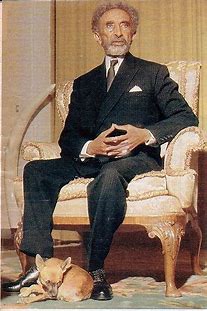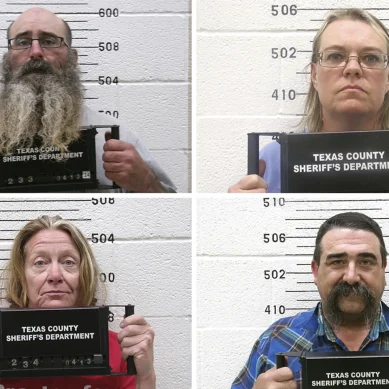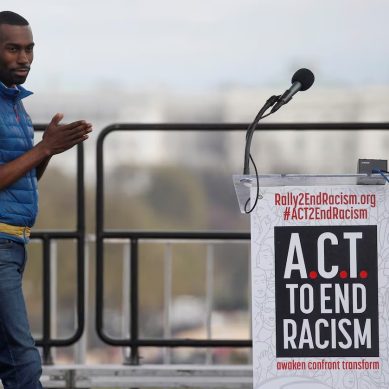
On April 2, 1930, Haile Selassie, originally, Ras Tafari Makonnen, became Emperor Haile Selassie of Ethiopia. Prior to being emperor, he served as Regent Plenipotentiary of Ethiopia (Enderase) for Empress Zewditu from 1916 to 1930.
During his long reign, Selassie emerged as a powerful international god-like figure and symbol of a proud and independent Africa and a glorified figurehead of a movement of people who called themselves and still call themselves Rastafarians. Among some members of the Rastafari movement, referred to as the Messiah reincarnate of the Bible or just God incarnate.
Most Rastafarians believe Haile Selassie is God and that he will return to Africa members of the black community who are living in exile as the result of colonisation and the slave trade.
Rastafari theology developed from the ideas of Marcus Garvey, a political activist who wanted to improve the status of fellow blacks. This distinction notwithstanding, he was a Christian and adhered to the tenets and liturgy of the Ethiopian Orthodox Church. He holds the record for the longest time in power on the African continent.
After reigning for 44 years, he was ousted in 1974. The Derg, a non-ideological committee of low-ranking officers of the army did the ousting, but before this the army was more or less a personal army of the Emperor by the Emperor for the Emperor. The Derg enlisted men in the Ethiopian army who became the ruling military junta. Most influential people in the country had been arrested and thrown into the same prison in Addis Ababa.
Finally, the military arrested the emperor, put him under house arrest, then assassinated him on 27 August 1975. It immediately installed General Aman Andom as the new head of government. However, Andom was soon replaced by General Mengistu Haile Mariam in 1977, as violence raged. It is widely believed Mariam, who was also overthrown by soldiers in 1991 and sought refuge in Zimbabwe, was complicit the death of the emperor.
He was charged in absentia with genocide, homicide, illegal imprisonment and property seizures and grabbing. Mengistu Haile Mariam, at 85, still lives in Harare, Zimbabwe, despite an Ethiopian court verdict which found him guilty of genocide in absentia. Virtually all overstayed rulers of Africa would face charges similar to those General Mengistu faced in absentia.
The Ethiopian experience with governance was a first good example that armies build to safeguard long-staying rulers do turn against their architects. Another good example was the Libyan experience where the long-stayed Gaddafi, who called himself Malik Maluk (King of Kings), was violently removed in 2011 after 42 years in power and assassinated.
Omar Bongo Ondimba, born Albert-Bernard Bongo, ruled oil-rich Gabon for 42 years until his death from cancer in 2009. Like the President Paul Biya of Cameroon, he tended to stay more in France than in Gabon while he ruled. Ali Bongo Ondimba (born Alain Bernard Bongo on February 9, 1959), sometimes known as Ali Bongo, is the son of Omar Bongo, who was President of Gabon from 1967 until his death in 2009.
Most long-stayed rulers strategise to ensure that one of their sons succeed them as presidents of their countries. In Cameroon, however, it is the wife of PaulBiya, Chantal Biya, strategising to succeed him in case he breathes his last. If this happens power would still remain in the family of long-staying Biya as it did in Gabon with long-staying Omar Bongo Ondimba, or is likely with Equatorial Guinea’s and Uganda’s long-staying rulers in a sea of political underdevelopment.
Angola’s Jose Eduardo dos Santos stepped down in September 2017 having led his oil-rich country for 38 years from 1979 to the year he relinquished power. He succeeded post-liberatiion war leader, António Agostinho da Silva Neto, who served as the first president of Angola from 1975 to 1979, having led the Popular Movement for the Liberation of Angola (MPLA) in the war for independence (1961-1974) from the Portuguese colonialists. Many expected that when the time came, dos Santos would elevate one of his children to replace him. But instead, he handpicked Defence Minister João Lourenço to be his successor.
Zimbabwe’s former President Robert Mugabe, who died in 2019, was in power for 37 years. He was eventually impeached for allowing his wife to usurp constitutional power”. Munyaradzi Emerson Paul Mnangwgwa, who would later become President of Zimbabwe, announced that party members had “unanimously” agreed to remove Mugabe from office and that the party in power would collaborate with the opposition MDC party in a two-day period to accomplish the feat.
Otherwise, there was no evidence that Mugabe was grooming any of his kith and kin to succeed him.
There is no doubt that one cannot overstay in power without being tempted to accumulate and concentrate power in his or her own hands and to primitively accumulate wealth at the expense of the development, transformation and progress of the country he or she rules. Some rulers do not separate their personal wealth from the wealth of their countries. This explains why virtually all long-stayed rulers of Africa are known to be extremely wealthy.
Forbes has long separated rulers and dictators from its annual rankings of the World’s Billionaires, distinguishing between personal, entrepreneurial wealth and wealth derived largely from positions of power, where lines often blur between what is owned by the country and what is owned by the individual.
However, one thing is true. Africa’s rulers, helped by violence and primitive accumulation of wealth, do have their own wealth separate from the wealth of their countries, unlike the King of Thailand, the Sultan of Brunei and Dubai’s Sheikh Mohammed Bin Rashid Al Maktoum who own the wealth of their countries.
Let me mention a few African rulers reputed to have become extremely wealthy by virtue of power. Apparently, corruption and nepotism are vices associated with them as well.
Mobutu Sese Seko of Zaire (now Democratic Republic of Congo) was notorious for corruption, nepotism and the embezzlement of between $4 billion and $15 billion during his rule. He was known for extravagances such as shopping trips to Paris via the supersonic Concorde aircraft. He had a mansion in every major city on the globe, and never bothered that his citizens wallowed in poverty with almost 70 per cent of the country’s youth unemployed.
Sese Seko built for himself a mansion in Zaire in gold, which was destroyed during his removal. It should be remembered that Rwanda’s RPA and Uganda’s UPDF participated in his removal towards the end of the 1990s, and thereafter gained in export of the diamonds and gold of Zaire as if these natural resources were from within their borders. Millions of people were killed just to remove Mobutu, but also ostensibly to flush Rwandese and Ugandan rebels from Zaire. Many Ugandan soldiers were accused of robbing the resources of DRC but it is Uganda paying the country for the crime committed by individual soldiers.
- A Tell report / By Oweyegha-Afunaduula, a former professor of environment at Makerere University, Uganda











